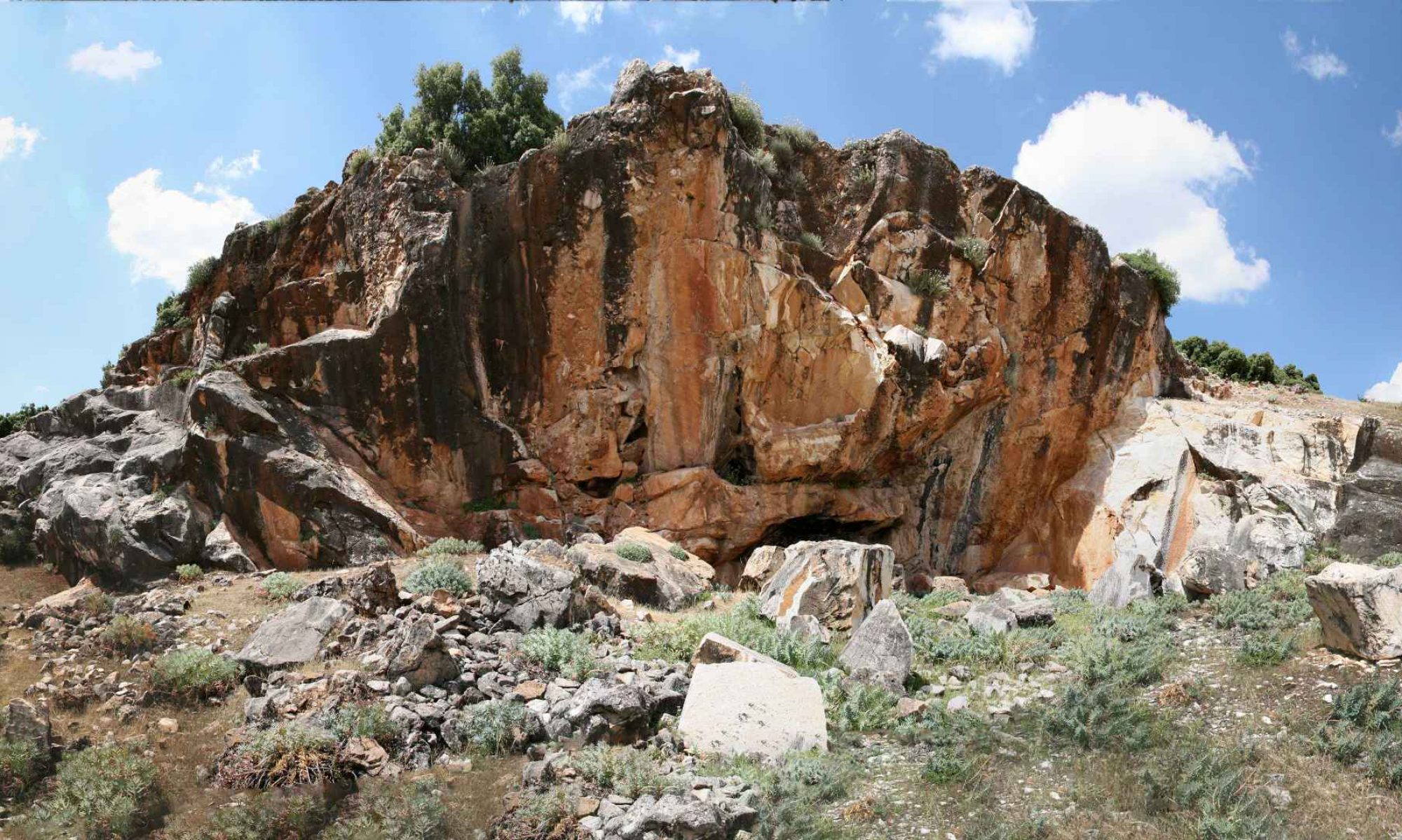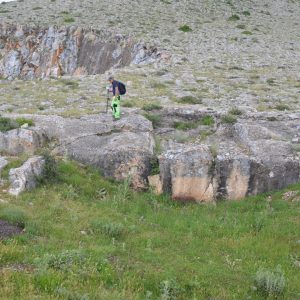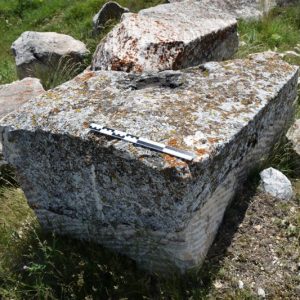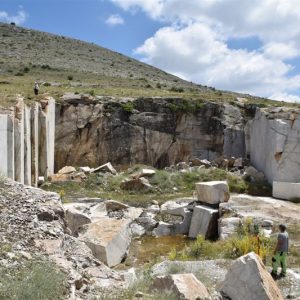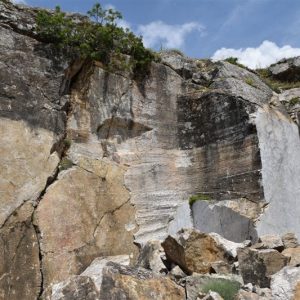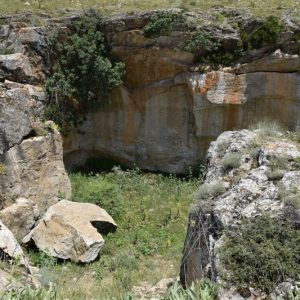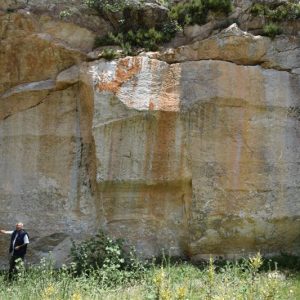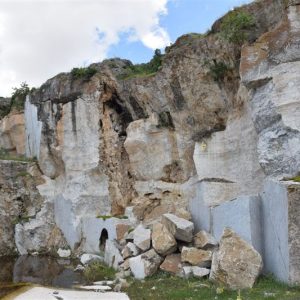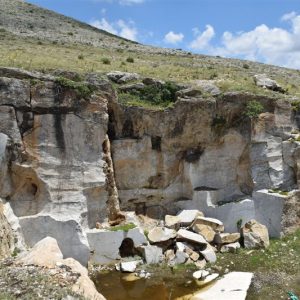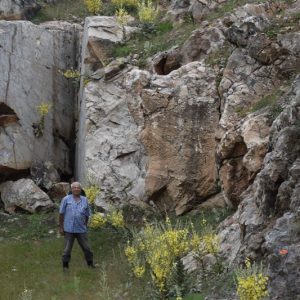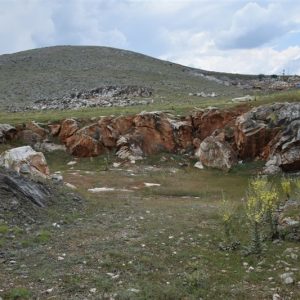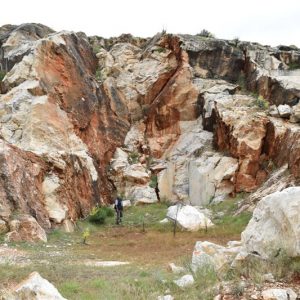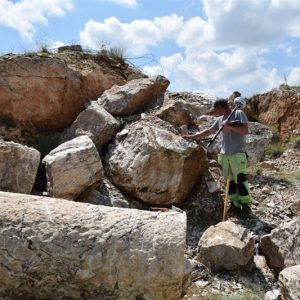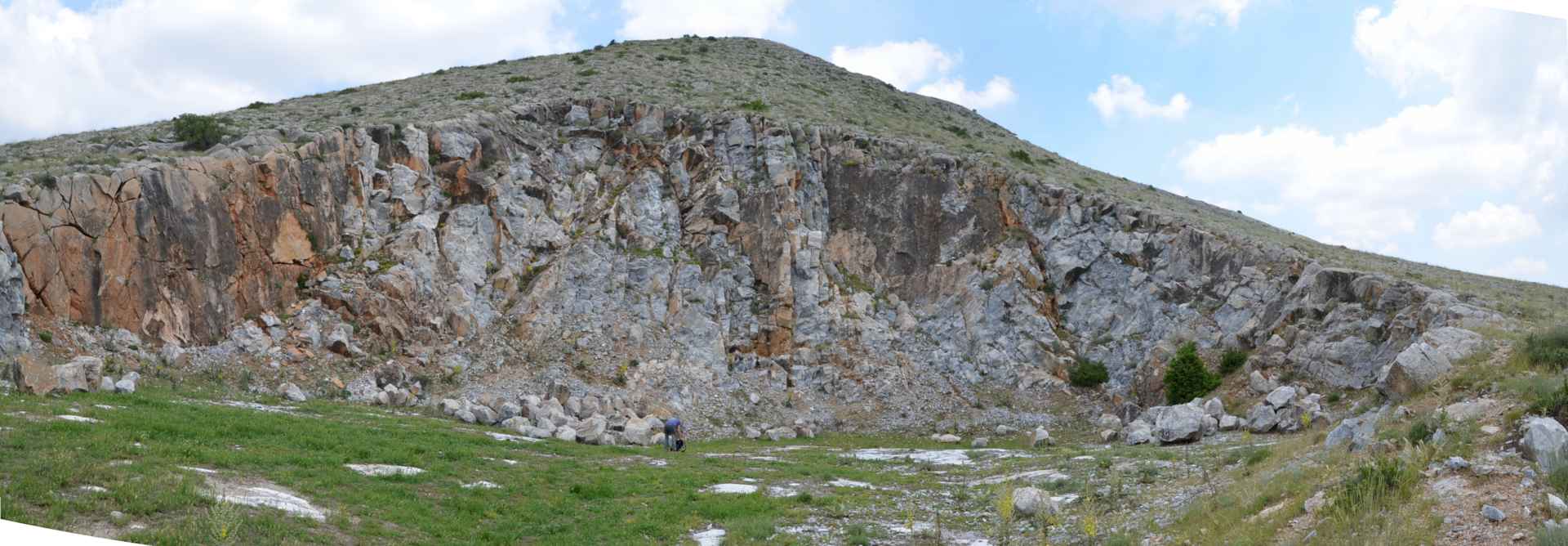
The history of the quarries of Altıntaş, situated in Phrygia, in Upper Tembris Valley, approximately fifty km northwest from Afyon, developed in tandem with the quarries of Dokimeion, to which they were somehow subordinated. The quarry inscriptions carved on prefabricated artefacts (mainly blocks and columns shafts dating from AD 92 to the reign of Antoninus Pius) relate to the organization of work in the quarries and to the imperial control system. The marble extracted here is similar both in quality and type to those quarried at Dokimeion: white marble, white and purple breccia (pavonazzetto), and grey marble.
Modern scholars’ interest in the quarries of Upper Tembris Valley began in 1926 when Christopher Cox discovered a large statue in pavonazzetto, identified much later by Marc Waelkens as one of the Dacian prisoners destined for the Trajan’s Forum in Rome (Waelkens 1985). This discovery, along with numerous inscriptions and unfinished artefacts, found in the vicinity of the quarries, testify to the site’s importance. One should remember that already in 1927 and 1928 William Calder, after his visit in Phrygia in 1924, together with Christopher Cox and William H. Buckler published (1927; 1928) various inscriptions from the Upper Tembris Valley.
In current scholarship, the Altıntaş quarries are usually united with those located in Dokimeion. The numerous papers published on the quarry labels discuss the administrative system operating in the quarries (which included both local private or imperial enterprises), attendant workshops, and artistic issues related to local production of gravestones (see e.g. Christol and Drew-Bear 1986; Waelkens 1986; Fant 1989; Hirt 2010; Pensabene 2010). To date, archaeometric studies have concerned mainly the geochemical analysis of stable C and O isotope ratios (Attanasio et al. 2006) and the electroparamagnetic resonance spectroscopy –EPR– (Attanasio 2003).
In 2015, the Marmora Asiatica team conducted fieldwork in four clusters named AL1–4. Similar to Dokimeion, although not with the same intensity and scale, extensive modern quarrying has destroyed much of the ancient evidence. Nevertheless, it was still possible to identify around fifty quarries with traces of ancient exploitation, of which eight were scanned. Clusters AL2–4 contain over 30 quarries, which have never been the subject of systematic investigation before.
Among ancient artefacts documented in the quarries of Altıntaş are mainly architectural elements, such as columns or marble blocks. New pictorial and textual graffiti were also recorded.
References
- Attanasio D., 2003: Ancient White Marbles. Analysis and Identification by Paramagnetic Resonance Spectroscopy. Rome: L’Erma di Bretschneider.
- Attanasio, D., Brilli, M., Ogle N., 2006: The Isotopic Signatures of Classical Marbles. Rome: L’Erma di Bretschneider.
- Buckler, W.H., Calder, W.M., Cox C.W.M., 1927: ‘Asia Minor, 1924. IV. A Monument from the Upper Tembris Valley’. Journal of Roman Studies 17, 49–58.
- —- 1928: ‘Asia Minor, 1924. V. Monuments from the Upper Tembris Valley’. Journal of Roman Studies 18, 21–40.
- Christol, M., Drew-Bear, Th., 1986: ‘Documents latins de Phrygie’. Tyche 1, 4–87.
- Fant, J.C., 1989: Cavum antrum Phrygiae. The Organization and Operations of the Roman Imperial Marble Quarries in Phrygia. BAR International series 482, Oxford: Archaeopress.
- Hirt, A.M., 2010: Imperial Mines and Quarries in the Roman World: Organizational Aspects, 27 BC–AD 235. Oxford: OUP.
- Pensabene, P., 2010: ‘Cave di marmo bianco e pavonazzetto in Frigia. Sulla produzione e sui dati epigrafici’. Marmora 6, 71–134.
- Waelkens, M., 1985: ‘From Phrygian quarry. The provenance of the statues of the Dacian prisoners in Trajan’s forum at Rome’. American Journal of Archaeology 89, 641–653.
- —– 1986: Die kleinasiatischen Türsteine. Typologische und epigraphische Untersuchungen der kleinasiatischen Grabreliefs mit Scheintür. Mainz: Philipp von Zabern.
